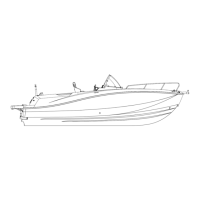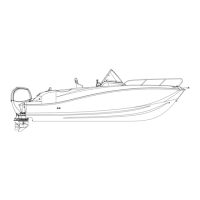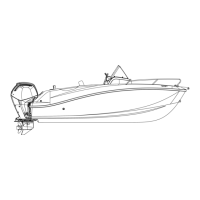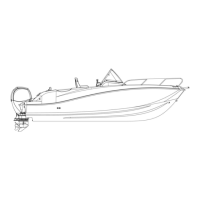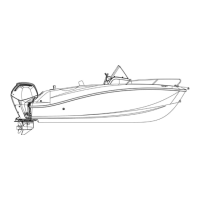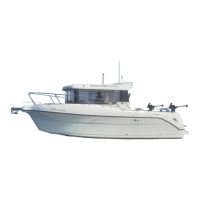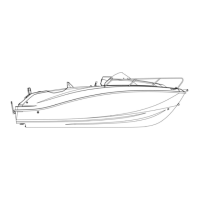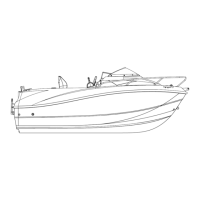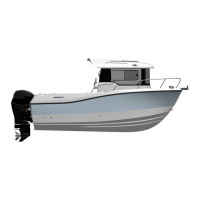Quicksilver 755SD — System & Component Overview and Operaon
17
feed line was ever cut or broken below the level of the fuel in the tank. If the feed line ever broke,
some fuel would leak out from the line, however, the an-siphon valve prevents the enre contents
of the tank to siphon into the boat.
NEVER REMOVE OR MODIFY THE ANTI-SIPHON VALVE FROM THE FUEL TANK.
Ethanol—Blended Fuels
Ethanol is an oxygenated hydrocarbon compound that has a high octane rang and therefore is useful
in increasing the octane level of unleaded gasoline. The fuel system components of your Mercury
engine(s) have been tested to perform with the maximum level of ethanol blended gasoline (10%
ethanol), currently allowed by the EPA in the United States.
Special precauons should be considered with the use of fuel containing ethanol in your system. Fuels
with ethanol can aack some fuel-system components, such as tanks and lines, if they are not made
from acceptable ethanol-compable materials. This can lead to operaonal problems or safety issues
such as clogged lters, leaks, or engine damage.
Your boat was manufactured, and shipped from the factory with ethanol compable materials. Before
introducing petrol with ethanol into your fuel tank, ask your dealer if any components have been
added or replaced that are not recommended by Quicksilver, Mercury or may not be ethanol-
compable.
Filling The Tank
It is best to maintain a full tank of fuel when the engine is not in use. This will reduce the air ow in
and out of the tank due to changes in temperature as well as liming exposure of ethanol in the fuel
to humidity and condensaon.
When lling the tank, do not aempt to top o the tank. When the nozzle shuts o, the tank is full,
and connuing to ll past the fuel ll shuto will cause the system to spit fuel back.
Phase Separaon
Humidity and condensaon create water in your fuel tank which can adversely eect the ethanol
blended fuel. A condion called phase separaon can occur if water is drawn into the fuel beyond the
saturaon point. The presence for water in the fuel beyond the saturaon level will cause most of the
ethanol in the fuel to separate from the bulk fuel and drop to the boom of the tank, signicantly
reducing the level of ethanol in the fuel mixture in the upper level (phase). If the lower level (phase),
consisng of water and ethanol, is deep enough to reach the fuel inlet, it could be pumped directly
into the engine(s) and cause signicant problems. Engine problems can also result from the reduced
ethanol/fuel mixture le in the upper phase of the tank.
Addives
There is no praccal addive known that can prevent or correct phase separaon. The only soluon is
to keep water from accumulang in the tank. If phase separaon does occur, your only remedy is to
drain the fuel, clean and dry the tank completely and rell with a fresh, clean tank of fuel.
Do not store any equipment containing petrol (outboard
engines, portable petrol tanks, etc.) in any cockpit storage
areas. These compartments were not designed to store
petrol and do not have adequate venlaon.
Petrol vapors can explode. Never smoke while handling or
lling up the petrol tank. Leaking fuel is a re and explosion
hazard. Inspect the fuel system annually to make sure that
there are no leaks and corrosion in the system.
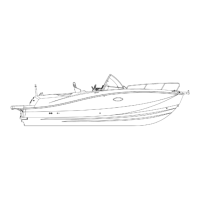
